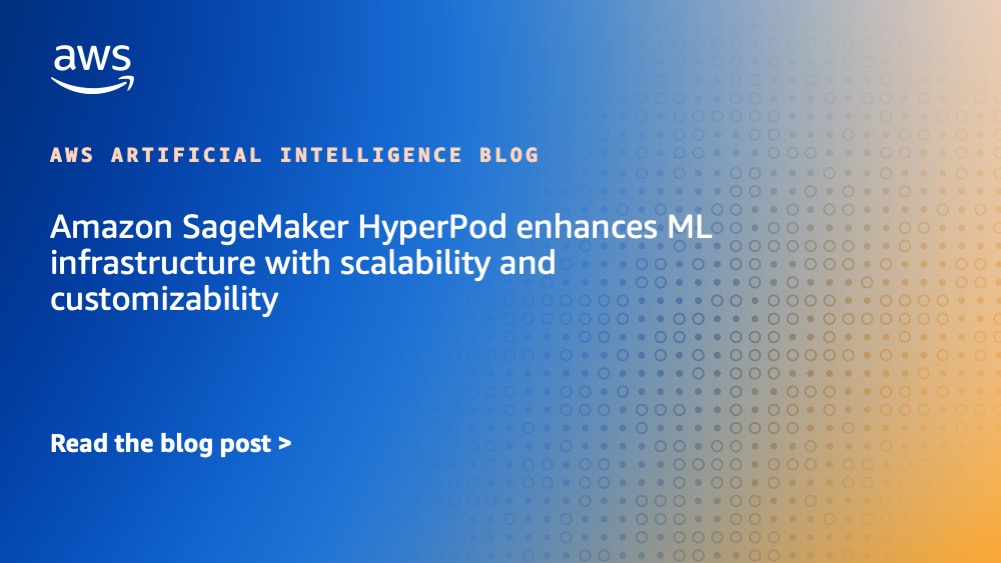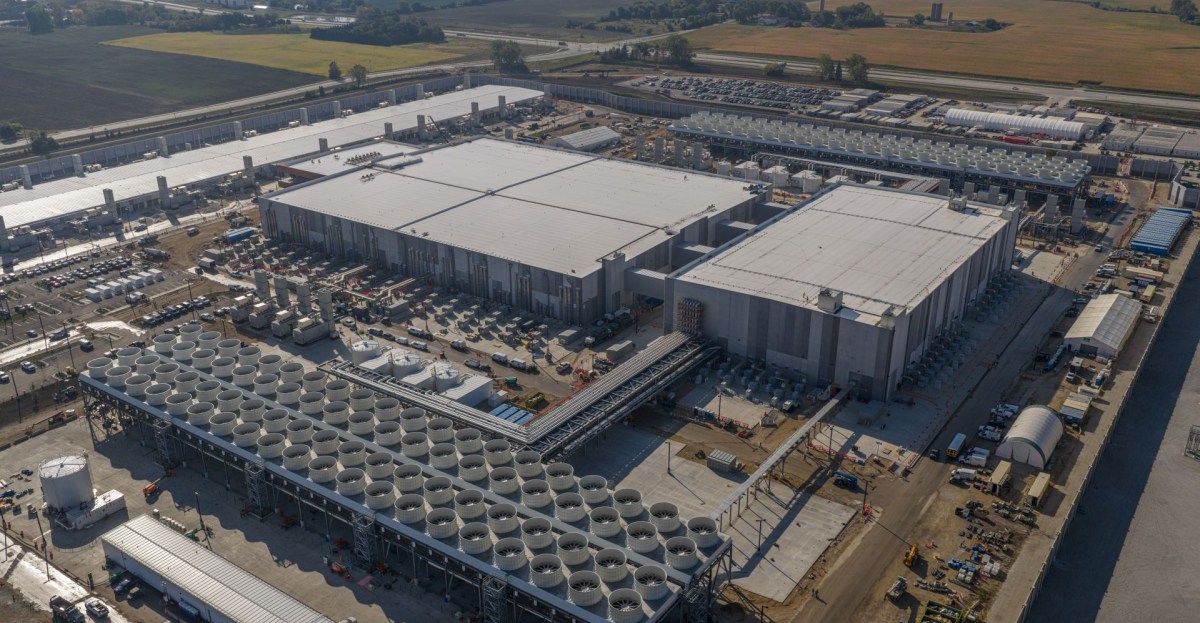
Amazon SageMaker HyperPod Enhances ML Infrastructure with Scalability and Customizability
Sources: https://aws.amazon.com/blogs/machine-learning/amazon-sagemaker-hyperpod-enhances-ml-infrastructure-with-scalability-and-customizability, aws.amazon.com
TL;DR
- Amazon SageMaker HyperPod is a purpose-built infrastructure for scalable foundation model (FM) training and inference.
- Continuous provisioning reduces wait times and accelerates training and deployment by provisioning resources in the background, with control via the —node-provisioning-mode parameter.
- The new custom AMI feature lets enterprises build images pre-configured with security agents, compliance tools, and proprietary software, aligning ML environments with organizational standards.
- DLAMI-based nodes (AWS Deep Learning AMIs) come pre-installed with popular frameworks and tools to streamline starting ML workloads.
- HyperPod supports Amazon Elastic Kubernetes Service (Amazon EKS) and enables deep infrastructure control, including SSH access to underlying EC2 instances.
Context and background
Amazon SageMaker HyperPod is described as purpose-built infrastructure designed to optimize foundation model (FM) training and inference at scale. By removing much of the undifferentiated heavy lifting involved in constructing and tuning ML infrastructure for large models, HyperPod aims to shorten training times and simplify operations. In the broader shift toward AI deployments across diverse domains, enterprises increasingly require flexibility and control over the GPU clusters that power FM workloads. HyperPod addresses these needs by offering persistent clusters with built-in resiliency and by providing deep infrastructure visibility and control, including SSH access to the underlying EC2 instances. The service integrates with Amazon EKS to support production-grade workflows and large-scale deployments across clusters containing hundreds or thousands of accelerators.
What’s new
AWS highlights two features that enhance control and adaptability for production ML workloads:
- Continuous provisioning: This feature dramatically reduces wait times for resource availability. It enables teams to begin training and deploying models with whatever compute power is immediately available, while the system continues provisioning the remaining requested resources in the background. The architecture introduces a user-facing parameter, —node-provisioning-mode, to let teams control scaling strategies.
- Custom AMIs: Organizations can build customized AMIs using SageMaker HyperPod performance-tuned public AMIs as a foundation. These custom images allow pre-installation of security agents, compliance tools, proprietary software, and specialized libraries to align with enterprise security and software requirements. The process includes selecting a base HyperPod AMI, then using supported methods (console or AWS CLI with Systems Manager) to create and apply a custom AMI to HyperPod clusters. In addition, HyperPod notes that for operational efficiency, nodes in a SageMaker HyperPod cluster are launched with AWS Deep Learning AMIs (DLAMIs), which are pre-built, DL-optimized images with popular frameworks and tools. When using custom AMIs, AWS provides guidance on obtaining the base AMI and then building a tailored image for deployment. Before using custom AMIs, users should verify the necessary IAM policies and permissions (e.g., for creating clusters with a custom AMI). To implement a custom AMI workflow, users typically:
- Retrieve the latest SageMaker HyperPod base AMI via the Amazon EC2 console or AWS CLI with Systems Manager.
- Use that base AMI as the foundation to construct a custom image with organizational software and security tooling.
- Create or update a HyperPod cluster by specifying the ImageId parameter to point to the custom AMI.
- Scale instance groups as needed to meet workload demands.
- Remove resources when no longer needed to avoid charges. These features collectively aim to improve scalability and customize ML infrastructure while maintaining enterprise security and operational standards.
Why it matters (impact for developers/enterprises)
For developers and enterprises, HyperPod represents a shift toward more controllable, policy-aligned GPU clusters that can support heavy FM workloads at scale. Continuous provisioning minimizes idle wait times and accelerates the journey from model development to production by starting with available resources and finishing provisioning in the background. The ability to use custom AMIs enables organizations to bake in their security tooling, compliance measures, and proprietary software into the operational environment, reducing friction when aligning ML workloads with corporate standards. The DLAMI baseline ensures that core frameworks and tools are ready for use, which helps teams accelerate experimentation and productionization without sacrificing performance or security. The combination of persistent cluster resiliency, SSH-level infrastructure visibility, and EKS integration means enterprises can operate large-scale ML pipelines with greater confidence in security, governance, and reproducibility. As AI deployments expand across domains, these capabilities become increasingly important for meeting organizational requirements while preserving agility and time-to-value.
Technical details or Implementation
HyperPod is designed to run on Amazon EKS and provides two key features designed to improve scalability and customization for ML workloads:
- Continuous provisioning: Activates a background provisioning workflow that reduces wait times for resources. A practical control parameter, —node-provisioning-mode, exposes scaling strategy choices to operators, enabling a more responsive provisioning model.
- Custom AMIs: Builds on top of HyperPod base AMIs by allowing teams to create their own AMIs with pre-installed security agents, compliance tooling, and specialty libraries. The process generally involves selecting a base HyperPod AMI, then layering organization-specific software before using AWS tools (console or CLI with Systems Manager) to point clusters to the custom ImageId. Operational notes include the use of AWS DLAMIs for baseline nodes, which are optimized for DL workloads and come with pre-installed frameworks and libraries. When deploying custom AMIs, teams must ensure appropriate IAM policies are in place (e.g., ClusterAdmin permissions) to create clusters with the designated ImageId, and follow steps to scale or update instance groups as workload demands evolve. The practical workflow for using a custom AMI typically involves:
- Identifying and selecting a base HyperPod AMI from public or repository sources.
- Creating a new custom AMI by pre-installing required security agents, compliance tooling, and proprietary software.
- Launching or updating a SageMaker HyperPod cluster with the new custom AMI by specifying the custom ImageId in the cluster configuration.
- Scaling instance groups to align capacity with model training or inference requirements.
- Cleaning up resources after use to minimize costs. It is important to note that HyperPod’s design emphasizes alignment with enterprise security and software standards, while maintaining the ability to scale out across large GPU clusters and manage operational complexity through continuous provisioning and tailored AMIs.
Key takeaways
- HyperPod provides purpose-built infrastructure for scalable FM training and inference on AWS.
- Continuous provisioning reduces wait times and improves resource utilization, enabling faster ML iterations.
- Custom AMIs enable enterprise-grade control by embedding security, compliance tools, and proprietary software into the ML environment.
- DLAMI-based nodes streamline initial workloads since they come with pre-installed frameworks and tools.
- SSH access to underlying EC2 instances preserves deep infrastructure visibility and debugging capabilities while operating within EKS.
- The solution supports production-grade deployment across large clusters and aligns with organizational policies and security rules.
FAQ
-
What is SageMaker HyperPod designed to do?
It is a purpose-built infrastructure for optimizing foundation model training and inference at scale, reducing operational heavy lifting and enabling scalable, policy-aligned GPU clusters.
-
What does continuous provisioning achieve?
It dramatically reduces wait times for resources by provisioning in the background, allowing training to start with whatever compute is available while the rest is provisioned automatically.
-
How are custom AMIs used in HyperPod?
Custom AMIs let enterprises pre-install security agents, compliance tools, and proprietary software, aligning environments with organizational standards and enabling tighter control.
-
What are the prerequisites for using custom AMIs?
Users should ensure appropriate IAM policies are in place (e.g., ClusterAdmin permissions) and follow steps to select a base HyperPod AMI and create a custom image before applying it to a cluster.
-
How does HyperPod handle security and control?
It supports SSH access to underlying EC2 instances, enabling deep infrastructure control, while maintaining enterprise-grade security and policy alignment through custom AMIs and DLAMI baselines.
References
- Amazon SageMaker HyperPod Enhances ML Infrastructure with Scalability and Customizability — https://aws.amazon.com/blogs/machine-learning/amazon-sagemaker-hyperpod-enhances-ml-infrastructure-with-scalability-and-customizability
More news
NVIDIA HGX B200 Reduces Embodied Carbon Emissions Intensity
NVIDIA HGX B200 lowers embodied carbon intensity by 24% vs. HGX H100, while delivering higher AI performance and energy efficiency. This article reviews the PCF-backed improvements, new hardware features, and implications for developers and enterprises.
Shadow Leak shows how ChatGPT agents can exfiltrate Gmail data via prompt injection
Security researchers demonstrated a prompt-injection attack called Shadow Leak that leveraged ChatGPT’s Deep Research to covertly extract data from a Gmail inbox. OpenAI patched the flaw; the case highlights risks of agentic AI.
Move AI agents from proof of concept to production with Amazon Bedrock AgentCore
A detailed look at how Amazon Bedrock AgentCore helps transition agent-based AI applications from experimental proof of concept to enterprise-grade production systems, preserving security, memory, observability, and scalable tool management.
Scaleway Joins Hugging Face Inference Providers for Serverless, Low-Latency Inference
Scaleway is now a supported Inference Provider on the Hugging Face Hub, enabling serverless inference directly on model pages with JS and Python SDKs. Access popular open-weight models and enjoy scalable, low-latency AI workflows.
How to Reduce KV Cache Bottlenecks with NVIDIA Dynamo
NVIDIA Dynamo offloads KV Cache from GPU memory to cost-efficient storage, enabling longer context windows, higher concurrency, and lower inference costs for large-scale LLMs and generative AI workloads.
Microsoft to turn Foxconn site into Fairwater AI data center, touted as world's most powerful
Microsoft unveils plans for a 1.2 million-square-foot Fairwater AI data center in Wisconsin, housing hundreds of thousands of Nvidia GB200 GPUs. The project promises unprecedented AI training power with a closed-loop cooling system and a cost of $3.3 billion.





